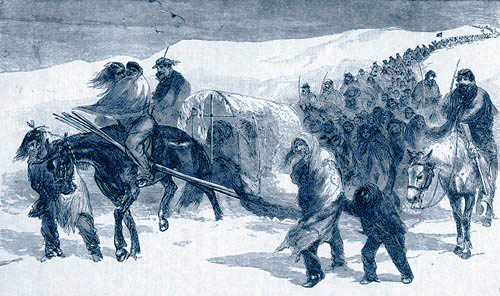 any years ago, I was driving from Kentucky to Oregon and had just left South Dakota. I was grinding my way westward, watching the sun sink before me – low on fuel, looking for gas. And then, suddenly, I came upon the Custer Battlefield.
any years ago, I was driving from Kentucky to Oregon and had just left South Dakota. I was grinding my way westward, watching the sun sink before me – low on fuel, looking for gas. And then, suddenly, I came upon the Custer Battlefield.
This was a chance not to be missed. I wheeled in, only to find the park had just closed. I could still get in, but everything was shut down. Not only might I run out of gas, I also feared the gate could be locked when I tried to leave. But I went on.
First, I came to the hillside where Northern Plains Indians had surrounded and killed Custer and his men. A large central graveyard marked the site. Scattered crosses showed where some had tried to run and been cut down. There were also memorials to the great Indian victory over these invaders.
Then another sign: Four miles away was the hilltop revetment where Major Marcus Reno had dug in and survived a two-day siege. All alone, sun setting, I shrugged off a frisson of fear, and I motored on 'til I came to Reno's carefully cut trenches. I saw the sheltered gully where his men had picked their way down to the river for water. One section was a field hospital.
There, in the lengthening shadows, a century fell away, and I heard ghosts. No ectoplasm, no voices. Just the powerful presence of the past. I was alone and in some small danger just being there. But fear of the consequences of my own folly only heightened my awareness of the ghosts.
I saw how Reno's group had escaped to this protected knoll without knowing what'd happened to Custer. I gazed down at the Little Big Horn River, where thousands of Indians had encamped. I could hear their shouts and movements in the dead silence of that surreal evening. I had the same lines of sight that Reno had, and I could taste the confusion of battle. As light faded, a century dissolved. I listened to the past.
So, think about ghosts. If we visit the original place – if we hold the artifact in our hand – and if we find the right frame of mind, then something happens. Combine knowledge of the past with the physical object, and we can have much more than the sum of two parts. If the circumstances are right, we share something with those who once touched – or who once saw – what we now touch or see.
This is when history transcends dates and facts. We join the past by sensing its unique texture. We hear what it's telling us. The same thing happened to me when a Polish friend took me to see Auschwitz on a rainy weekday – a day when we, and the ghosts, were the only beings in that desolate place.
But, put aside slaughter and genocide. Happier ghosts dwell in other places. Just walk through old houses, for all houses become haunted in the sense that I offer the word.
And, with that in mind, let us return to the ghosts who emerge out of the old books that changed lives in other centuries. They live in the fabric and the paper. They are the substance of the subtle interaction of text with marginal notes. As we immerse ourselves in the physical evidence before us, ghosts reveal the transforming power of the old handbooks and textbooks. Those ghosts tell us who they once were, and they live again.

Indian prisoners
For an account of Custer's defeat, see: http://www.eyewitnesstohistory.com/custer.htm
For an account of Reno's and Benteen's survival see: http://www.eyewitnesstohistory.com/custercont.htm
Here is the web site for the Little Bighorn Battlefield National Monument: http://www.nps.gov/libi/
And here is an excellent map of the Battle of Little Bighorn: http://www.lib.utexas.edu/maps/national_parks/little_bighorn_park99.pdf